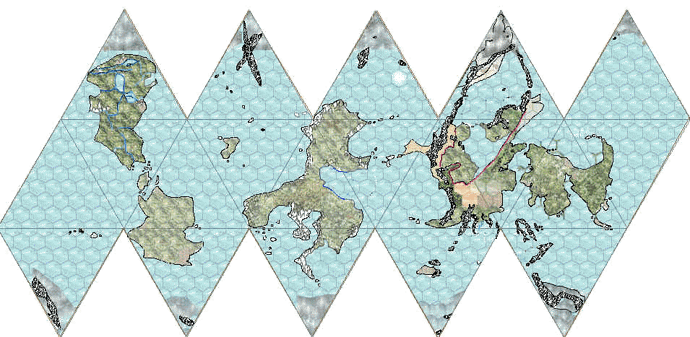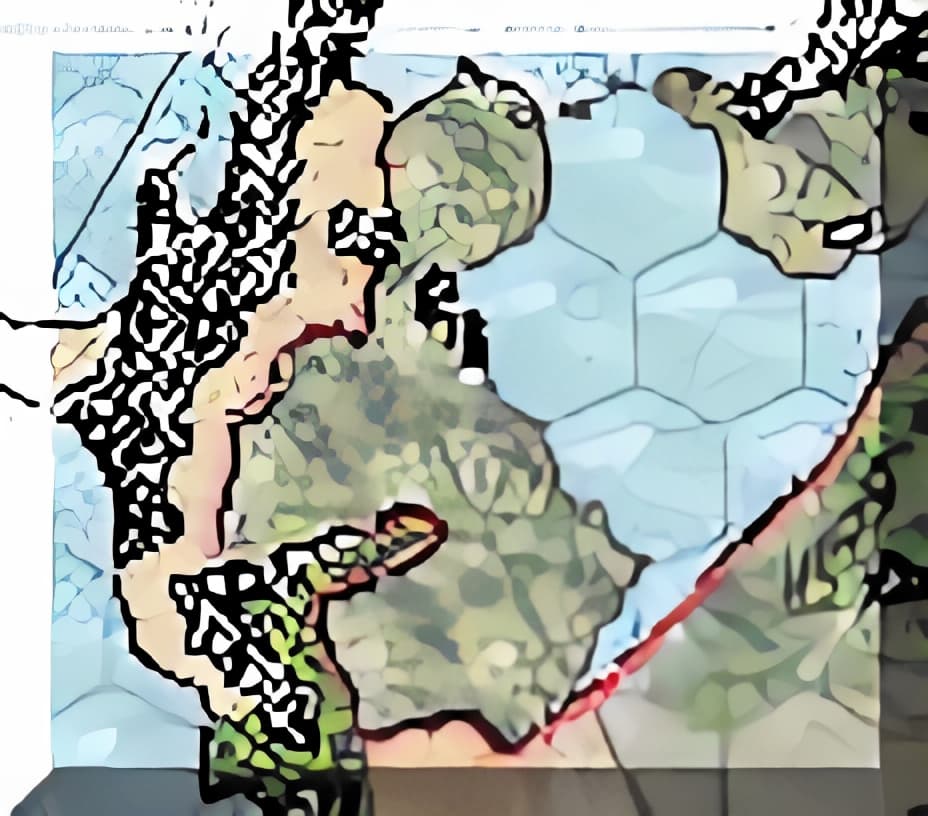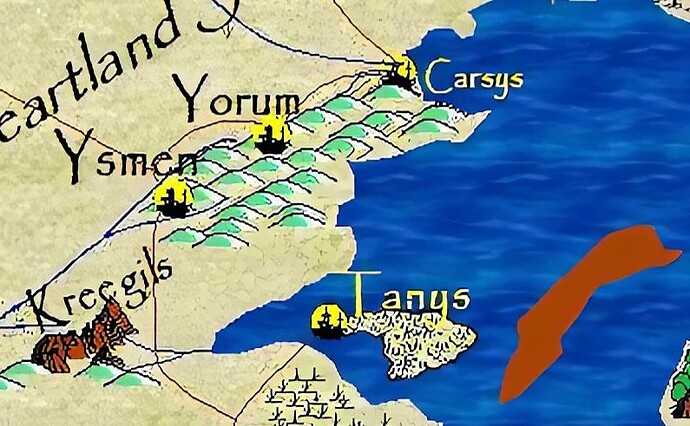Per Wisdom of Sorrow (you can find it in the BWOA public resources files in the Lost Cities of the Trembling Plains sections), and expanded on in some of Braxa’s notes, there were 4 primary cultural groups of humans during the Green Age:
-The Tanysh, who lived on the island of Tanys in the lake/inlet that would eventually become the Maze of Draj, they were a highly militaristic society that quickly rediscovered bronze and island and used chariot technology to conquer much of the Pristine Continent (the continent on which the Tablelands are located), absorbing other humans under their rule and persecuting the other Rebirth races. They apparently changed the ‘World’s Age’ Calendar system to ‘King’s Age."
Their empire quickly collapsed into many tribes and kingdoms, but the martial legacy they left behind seems to carry over even into the Brown Age. Their homelands were the region north of Draj, and south of Hogalay, back then known as the ‘Heartland Steppe.’ Major cities included ‘Ysmen,’ ‘Yorum’ (where Myron, Hamanu’s predecessor, was from) and ‘Carsys’ (where Egendo, Borys’ predecessor, was from).All these cities are long gone, collapsed into the modern area known as the Tembo Turrets.
(I don’t know why in the heck Waverly is that far north, on nearly every map its down south of the Pristine Tower)
-The Remans, who were part of a multi-racial confederation of former Rhulisti Families, who sailed to another continent (apparently the first Elves included former Rhulisti bio-ship captains, who took their knowledge with them), composed of Humans, Elves, Orcs, Dwarves, and Pterrans. Their continent was small but quickly became the population and cultural capital of the Green Age, and they ferried many other races and cultures to other continents.
Eventually Reman expats came back to the Tablelands as mercenaries and settlers, first settling the islands of the Sunrise Sea (probably from the east, so island hopping onto Draxa/Ebe and beyond) then founding ports and outposts like Giustenal. Eventually Remans pushed inland, resettling the old halfling city of Tyr’agi (as modern Tyr) and breaking the power the Tanysh peoples held over the continent. Going by the various snippets in netbooks, the Reman language was the foundation for Athas’ version of the Common tongue, and their political structure such as the lawkeeper system, psiocracies, ect influenced the geopolitical landscape of the entire Green Age world.
-The Melai were apparently the original founders of the cities of Yaramuke, Raam, Kalidnay, and Nibenay, meaning they inhabited the lands of the northern Tablelands. They were apparently ‘artistic’ and were conquered by the Tanysh, functioning as tributaries but retaining their own culture. Eventually, when Remans pushed into the continent, they overthrew the Tanysh and adopted Reman systems.
-The Golt are mentioning as living in the ‘Golt Forests’ that covered the large peninsula where Guistenal and the Pristine Tower are located. They might be the ancestors of the Gulgans.
-The Geshur were a ‘peaceful’ people who settled around the Sea of Marnita, founding Saragar.
Beyond that there are three other major mentioned groups from the ‘Equatorial Continent,’ Athas’ third inhabitable continent. All were related to the Tanysh, from settlers brought over by Reman ships:
-The Kel Tan, who became Keltis’ army and eventually the Kurnans. They were apparently a maritime culture with a strong dislike of the lizardfolk for raiding shipping, but if Keltis is any example, and given the supposed nautical focus of Green Age Elves, might have gotten along better with Elves than most humans. Their symbol was a Wasp, the Clave system and other examples of Kurnan culture might have been a thing or later developments.
-The ‘Mountain Men’ who were the bulk of Daskinor’s armies. Not a sedentary agricultural society, they were evidently nomadic or herders, revered the element of air above all others, believing that their souls would ascend into the sky. They hated the Goblins and were easily convinced by Daskinor that the Goblins, a people who lived in the roots of mountains and revered earth, were heretical. Going by Lost Cities, the Mountain Men and Daskinor were some of the nastiest humans in the Cleansing Armies, what with the whole ‘flaying entire cities alive’ thing. The flaying was apparently ritual, as it denied the Goblins their supposed cremation burial rituals as part of the ‘Ash Cult.’
-What I’m referring to as the ‘Windborn’, the proto-Draj. Not much on them, besides that they, like the Tanysh, were probably a nomadic chariot-using culture, whether or not the pseudo-Aztec culture was their own or something entirely invented by Tec is anyone’s guess.






 My only personal edits were making the northern part of Faye’loryn’s forest the Scorched Forest and the southern forest on Anattan the “Meridional Forest” I’ve seen mentioned in talk about the eastern continent (ie the one that partly appears on the map for Valley of Dust and Fire"), and maybe moving around some of Sysane’s cities (like sharn being at the mouth of the northern river)
My only personal edits were making the northern part of Faye’loryn’s forest the Scorched Forest and the southern forest on Anattan the “Meridional Forest” I’ve seen mentioned in talk about the eastern continent (ie the one that partly appears on the map for Valley of Dust and Fire"), and maybe moving around some of Sysane’s cities (like sharn being at the mouth of the northern river)
 I like the idea of more than one tower, even if the pristine tower is “the big one” maybe the rhulisti had some sort of “geomantic web”-style network of smaller support towers
I like the idea of more than one tower, even if the pristine tower is “the big one” maybe the rhulisti had some sort of “geomantic web”-style network of smaller support towers